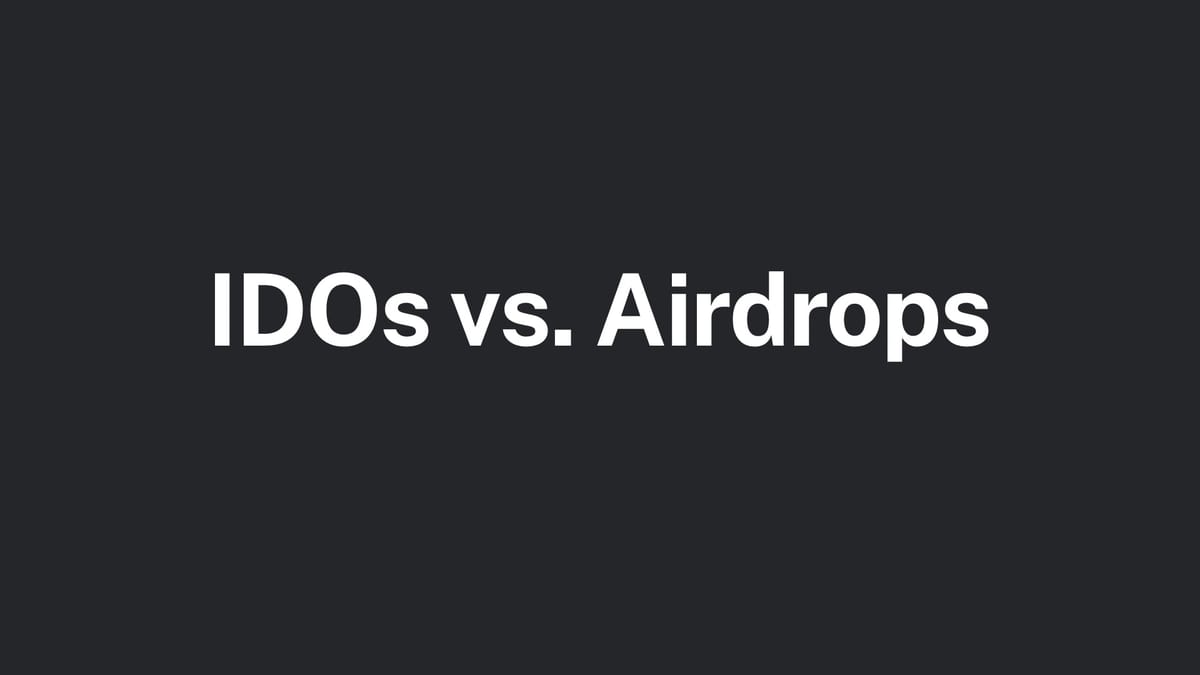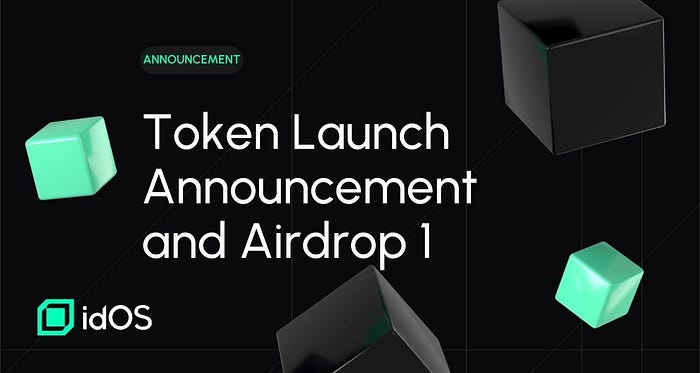IDOs vs. Airdrops: A Comprehensive Guide to Token Distribution Strategies

In the fast-moving world of cryptocurrency, how a project distributes its tokens can influence its growth, community adoption, and long-term viability. Two commonly used distribution methods are Initial DEX Offerings (IDOs) and Airdrops. While both are essential tools in the crypto ecosystem, they serve different purposes, involve different risks, and appeal to different participants.
This article explores how each method works, compares their pros and cons, and helps you decide which strategy suits your goals.
What Is an Initial DEX Offering (IDO)?
An Initial DEX Offering (IDO) is a decentralized fundraising method in which a blockchain project sells its native tokens to the public via a decentralized exchange (DEX) or a launchpad platform. Unlike Initial Coin Offerings (ICOs), which relied on centralized control, IDOs use smart contracts to automate the process and reduce third-party risk.
How IDOs Work
- Token Creation and Preparation: The project defines tokenomics, including total supply, pricing, and distribution strategy.
- Launchpad or DEX Partnership: The project partners with a platform like Polkastarter, DAO Maker, or Seedify to host the sale.
- Investor Qualification: Participants may need to complete KYC, join a whitelist, or stake tokens to qualify.
- Token Sale: Investors contribute crypto (e.g., ETH, BNB, USDT) to purchase tokens at a fixed or dynamic price.
- Token Listing: Tokens are listed immediately on a DEX, enabling users to trade right after the sale.
Advantages of IDOs
- Global Accessibility: Open to users worldwide with a compatible wallet.
- Decentralization: No reliance on centralized authorities or exchanges.
- Immediate Liquidity: Tokens can be traded instantly after launch.
- Lower Costs: Listing fees are often lower than with centralized exchanges.
Risks of IDOs
- Volatility: Token prices may spike or crash immediately after launch.
- Scams and Poor-Quality Projects: Some projects may be rushed or underdeveloped.
- Entry Barriers: Whitelisting and staking requirements can limit access.
- Overhyped Launches: High demand may result in failed transactions or unfair token distribution.
What Is an Airdrop?
An Airdrop is a promotional method where a blockchain project distributes free tokens to selected users’ wallets. Airdrops are typically used to reward early users, raise awareness, or encourage adoption of a new product, protocol, or ecosystem.
How Airdrops Work
- Eligibility Defined: Based on criteria like past wallet activity, token holdings, or participation in community tasks.
- Snapshot Taken: The project records wallet data at a specific block to determine who qualifies.
- Token Distribution: Qualified users receive tokens directly to their wallets.
- Engagement Encouraged: Airdrops are designed to bring attention to a project and incentivize further interaction.
Advantages of Airdrops
- Free Participation: Users receive tokens without needing to invest capital.
- User Acquisition: Encourages wallet creation and platform engagement.
- Community Building: Creates loyalty and buzz, especially when tied to real platform use.
- Easy to Access: Many airdrops require little to no effort to claim.
Risks of Airdrops
- Scams and Phishing: Fake airdrops can lead to wallet breaches or stolen funds.
- Low Token Value: Many tokens received via airdrops never gain significant value.
- Market Dumping: Users often sell tokens immediately, causing price drops.
- Regulatory Ambiguity: In some regions, airdropped tokens may be considered taxable income.
IDOs vs. Airdrops: A Detailed Comparison
| Category | Initial DEX Offering (IDO) | Airdrop |
|---|---|---|
| Primary Purpose | Raise funds through public token sale | Promote a project and increase token distribution |
| Cost to Participate | Requires investment (e.g., ETH, BNB, USDT) | Free; may involve minor tasks or token holdings |
| Participation Barriers | Whitelisting, staking, or platform-specific conditions | Low; eligibility varies, often based on past wallet activity |
| Liquidity | Immediate trading on decentralized exchanges | Varies; may take time for tokens to be listed or become tradeable |
| Risk Profile | Higher: potential losses due to volatility or failed projects | Lower: no financial investment required, but exposure to scams |
| User Requirements | Requires research, wallet setup, capital, and possible KYC | Basic wallet knowledge; sometimes minimal interaction |
| Token Value Potential | Can be high if project succeeds; risk of extreme volatility | Often low or unknown; value may not materialize |
| Best Suited For | Active investors seeking early access to high-potential projects | New users, community supporters, or those exploring low-risk options |
| Examples | TrustSwap, Seedify, DAO Maker, Polkastarter | Uniswap (UNI), Arbitrum (ARB), Optimism (OP), ApeCoin (APE) |
Choosing the Right Option
For Investors
If you're looking for early exposure to promising blockchain projects and are comfortable with risk, IDOs offer potentially high returns but require careful due diligence and capital investment. Airdrops, on the other hand, are low-risk ways to gain exposure to new tokens, though the value is often speculative.
IDOs give investors the opportunity to enter a project at an early stage and potentially see large returns as the project grows. However, the risks are amplified due to the volatility in the market and the potential for project failure. For those looking to maximize their return, research is essential before investing in any IDO.
For Projects
- Use IDOs to raise capital, create liquidity, and validate market demand.
- Use Airdrops to reward early adopters, generate buzz, or encourage user onboarding.
For Casual Users
Airdrops are ideal for users who want to passively explore new tokens without investing money. Still, it’s important to verify the legitimacy of the airdrop and avoid interacting with suspicious websites or apps.
While airdrops are low-risk opportunities for casual users to explore the crypto space without financial commitment, it’s essential to remember that not all airdrops are valuable or legitimate. Casual users should be cautious about the potential for scams, as malicious actors may try to exploit them. Participating in well-known, reputable projects can help mitigate this risk. Also, some airdropped tokens may not hold long-term value, so it's important for casual users to manage their expectations and approach these opportunities with caution.
Best Practices for Safe Participation
When Participating in IDOs
- Research Thoroughly: Investigate the project's whitepaper, roadmap, and team.
- Use Reputable Platforms: Stick with trusted launchpads and DEXs.
- Manage Risk: Only invest what you can afford to lose; be wary of overhyped launches.
- Follow Announcements: Join communities and mailing lists for real-time updates on whitelist and sale dates.
When Participating in Airdrops
- Verify Authenticity: Check official sources before connecting your wallet.
- Avoid Giving Private Keys: No legitimate airdrop will ever ask for them.
- Use a Separate Wallet: Isolate your main funds by using a dedicated wallet for airdrop activities.
- Track Legitimate Airdrops: Use trusted aggregators like Airdrops.io or CoinMarketCap’s airdrop section.
Conclusion
Initial DEX Offerings and Airdrops are two essential tools in the crypto token distribution playbook. Each serves a different strategic purpose:
- IDOs are structured, investment-based events aimed at raising capital and building liquidity. They offer high potential but require capital, timing, and research.
- Airdrops are promotional mechanisms that reward users or attract attention with minimal effort, ideal for growing communities and increasing adoption.
Both can be valuable depending on your role in the ecosystem. By understanding their mechanics, risks, and rewards, you can navigate token launches more strategically and responsibly.
References














Comments ()